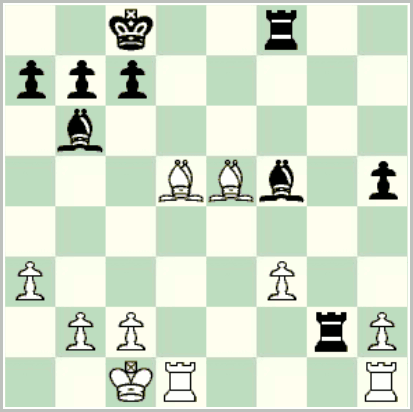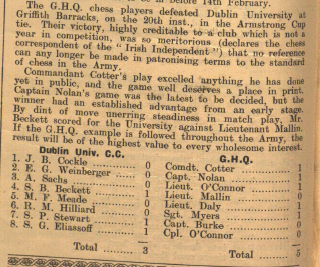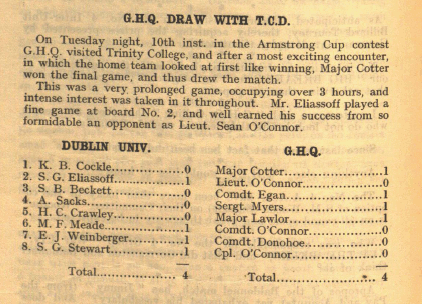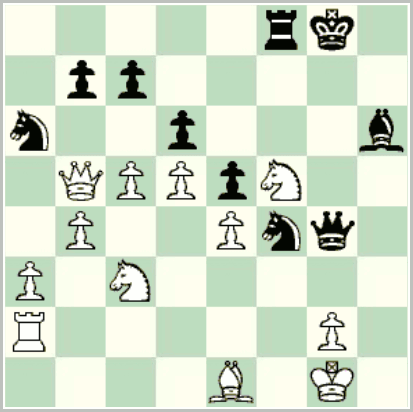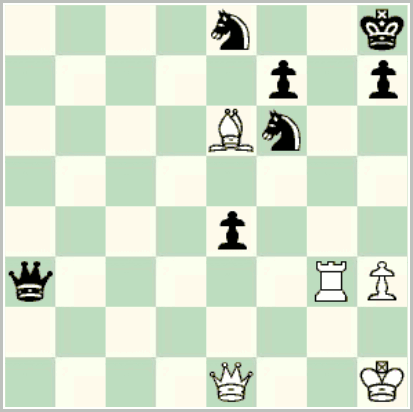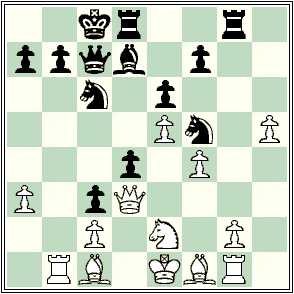This year’s Irish championship, in progress as I write this, has a report available here, including all 35 games from the first four rounds. The report will be updated round-by-round.
Though the field is markedly smaller than last year’s, it includes three serious contenders who have never won: David Fitzsimons, Stephen Jessel, and Conor O’Donnell. There are also several very young players for whom this is the first Irish championship, generally acquitting themselves very well so far.
Update, July 8, 2015: Round 5 has been added. An eventful round! Stephen Brady took a pawn that turned out to be poisoned on the top board, bringing David Fitzsimons back into the lead. But only by ½ point ahead of a group of 5 (!) players. Conor O’Donnell will be disappointed at dropping a half point against Tim Harding when he was two pawns up at the first time control; 41 … Rd3!? Note: the report has added a column for player ages, which here means the age they will reach on this year’s birthday, whenever that is.
Update, July 10, 2015: Round 6 has been added. Another interesting round with decisive games at the top. David Fitzsimons’ king was caught in a queen & rook crossfire; he could earlier have entered a rook ending that seems drawn. On board 2 was yet another critical Irish championship game between Colm Daly and Stephen Brady (how many of these have there been down the years, and what is the overall record?); this time it all seemed to fall apart for Colm. Stephen Jessel won well on board 3. So Brady, Jessel, and Short lead, with Fitzsimons and O’Donnell a half point behind. What are the tie-break rules again? Note: the (long-standing) openings index bug has been fixed, and a video by Colm Daly (of round 4, boards 8 and 9) has been added.
Update, July 10, 2015: Round 7 results have been posted at chess-results.com. David Fitzsimons drops a second consecutive game and now is out of the running. Stephen Jessel and Philip Short share the lead on 5½, with Stephen Brady a half point behind. Will update the report when games are posted. Later: Round 7 games now added. David Fitzsimons will be bitterly disappointed at that game.
Update, July 11, 2015: Sensational results in round 8, with Colm Daly downing Stephen Jessel with Black. Philip Short drew with Black against Conor O’Donnell, and shares the lead with Stephen Brady, who beat Gerry MacElligott on board 3. So with a round to go it’s the veterans Brady and Short in the lead on 6/8, with Daly and Jessel a half point back. In the last round it’s Short-Daly, O’Connell-Brady, and Harding-Jessel. Games not available yet.
Update, July 13, 2015: When the dust had settled it was Stephen Brady and Philip Short who emerged joint winners in a hard-fought and close finish. As Martin Crichton points out below, many records were set. This is Stephen Brady’s 9th championship, equalling the record set by John J. O’Hanlon, whose championships spanned the period 1913 to 1940. Philip Short’s win comes 34 years after his first championship (in 1981, shared with David Dunne), surpassing the previous record of 27 years, shared by O’Hanlon and by James Alexander “Porterfield” Rynd (winner in 1865 and 1892). The report has now been updated with all games.

